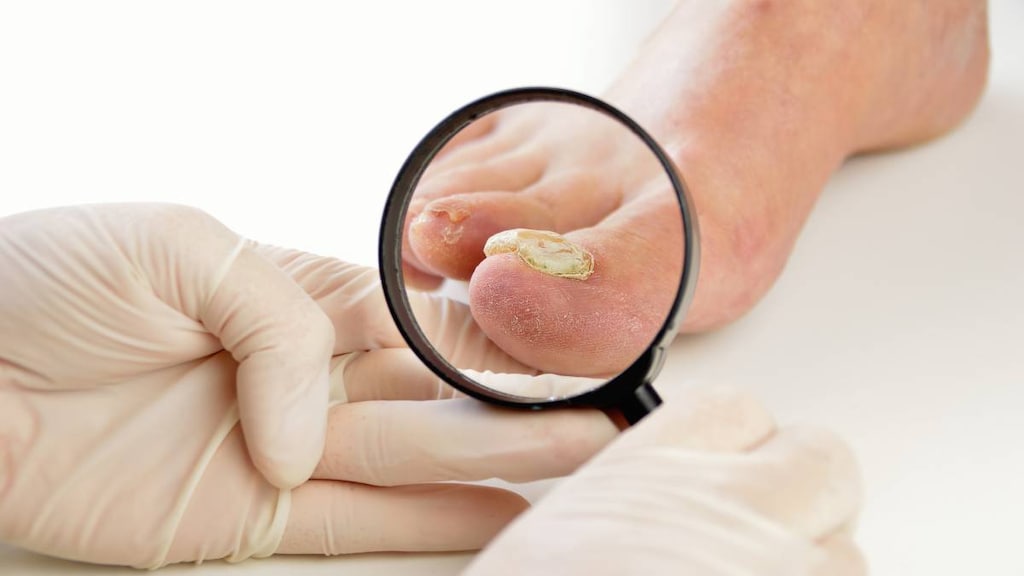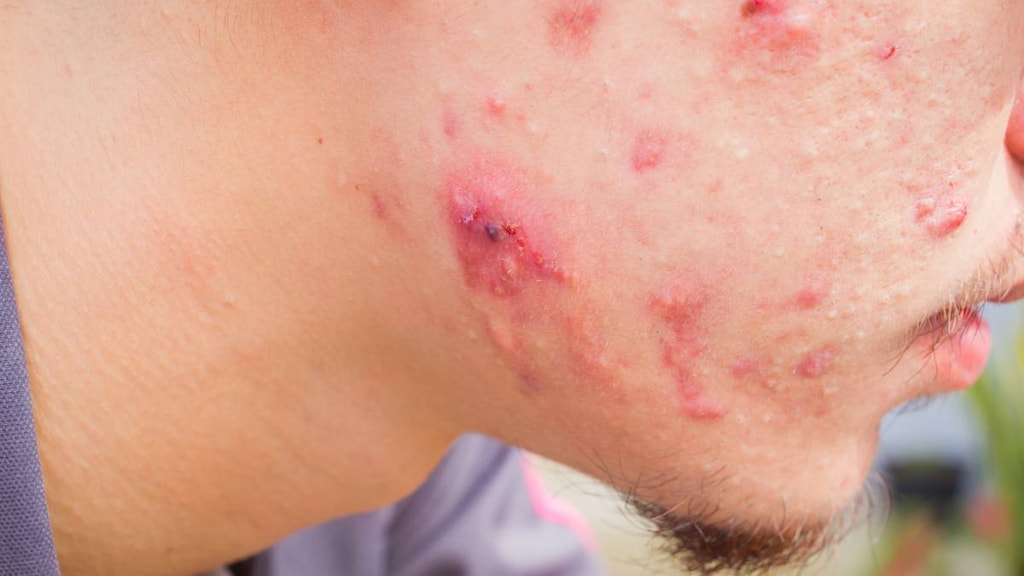Dosage Forms
Excipient information presented when available (limited, particularly for generics); consult specific product labeling.
Cream, External:
Avage: 0.1% (30 g) [contains benzyl alcohol]
Tazorac: 0.05% (30 g, 60 g) [contains benzyl alcohol]
Tazorac: 0.05% (30 g) [contains benzyl alcohol, edetate disodium]
Tazorac: 0.1% (30 g, 60 g) [contains benzyl alcohol]
Generic: 0.1% (30 g, 60 g)
Foam, External:
Fabior: 0.1% (50 g, 100 g)
Gel, External:
Tazorac: 0.05% (30 g, 100 g); 0.1% (30 g, 100 g) [contains benzyl alcohol]
Pharmacology
Mechanism of Action
Synthetic, acetylenic retinoid which modulates differentiation and proliferation of epithelial tissue and exerts some degree of anti-inflammatory and immunological activity
Pharmacokinetics/Pharmacodynamics
Absorption
Minimal following cutaneous application (≤6% of dose)
Distribution
Retained in skin for prolonged periods after topical application.
Metabolism
Prodrug, rapidly metabolized via esterase hydrolysis to an active metabolite (tazarotenic acid) following topical application and systemic absorption; tazarotenic acid undergoes further hepatic metabolism
Excretion
Urine and feces (as metabolites)
Onset of Action
Psoriasis: 1 week
Duration of Action
Therapeutic: Psoriasis: Effects have been observed for up to 3 months after a 3-month course of topical treatment
Half-Life Elimination
Cream, gel: ~81 hours (tazarotenic acid); Foam: 8.1 ± 3.7 hours
Protein Binding
>99% (tazarotenic acid)
Use in Specific Populations
Special Populations: Children
Arazlo: In patients 9 to <12 years of age, mean tazarotenic acid Cmax is ~2.4-fold higher and mean AUC (0-t) is ~2.3-fold higher compared to patients ≥12 years of age.
Use: Labeled Indications
Acne (Fabior, Tazorac 0.1% cream, Tazorac 0.1% gel): Topical treatment of acne vulgaris in patients 12 years and older.
Palliation of fine facial wrinkles, facial mottled hyper-/hypopigmentation, benign facial lentigines (Avage): Adjunctive agent for use in the mitigation (palliation) of facial fine wrinkling, facial mottled hyper- and hypopigmentation, and benign facial lentigines in patients 17 years and older who use comprehensive skin care and sunlight avoidance programs.
Psoriasis:
Tazorac 0.05% and 0.1% cream: Topical treatment of plaque psoriasis in patients 18 years and older.
Tazorac 0.05% and 0.1% gel: Topical treatment of stable plaque psoriasis of up to 20% body surface area involvement in patients 12 years and older.
Limitations of use: Does not eliminate or prevent wrinkles, repair sun-damaged skin, reverse photoaging, or restore more youthful or younger skin. Has not demonstrated a mitigating effect on significant signs of chronic sunlight exposure such as coarse or deep wrinkling, tactile roughness, telangiectasia, skin laxity, keratinocytic atypia, melanocytic atypia, or dermal elastosis. Safety and effectiveness for the prevention or treatment of actinic keratoses, skin neoplasms, or lentigo maligna has not been established. Safe and effective daily use >52 weeks is not known. Safety of gel use on more than 20% body surface area has not been established.
Contraindications
Hypersensitivity to tazarotene or any component of the formulation; women who are or may become pregnant
Documentation of allergenic cross-reactivity for retinoids is limited. However, because of similarities in chemical structure and/or pharmacologic actions, the possibility of cross-sensitivity cannot be ruled out with certainty.
Dosage and Administration
Dosing: Adult
Note: In patients experiencing excessive pruritus, burning, skin redness, or peeling, discontinue until integrity of the skin is restored, or reduce dosing to an interval the patient is able to tolerate.
Acne: Topical:
Fabior: Apply a small amount to affected area once daily in the evening.
Tazorac cream/gel 0.1%: Apply a thin layer (2 mg/cm2) to affected area once daily in the evening.
Palliation of fine facial wrinkles, facial mottled hyper-/hypopigmentation, benign facial lentigines: Topical: Avage: Apply a pea-sized amount to entire face once daily at bedtime.
Psoriasis: Topical: Tazorac cream/gel: Initial: 0.05%: Apply once daily to psoriatic lesions using enough (2 mg/cm2) to cover only the lesion with a thin film. May increase strength to 0.1% if tolerated and necessary.
Dosing: Geriatric
Refer to adult dosing.
Dosing: Pediatric
Note: In patients experiencing excessive pruritus, burning, skin redness, or peeling, discontinue until integrity of the skin is restored or reduce dosing to an interval the patient is able to tolerate.
Acne vulgaris:
Cream or gel: Children ≥12 years and Adolescents: Topical: Tazorac (0.1%): Apply as a thin film (2 mg/cm2) to affected area(s) once daily in the evening.
Foam: Children ≥12 years and Adolescents: Topical: Fabior (0.1%): Apply a small amount to affected area(s) once daily in the evening.
Lotion: Children ≥9 years and Adolescents: Topical: Arazlo (0.045%): Apply a thin layer to affected area(s) once daily.
Psoriasis:
Cream: Adolescents ≥18 years: Topical: Tazorac (0.05%): Initial: Apply a thin film (2 mg/cm2) to affected area once daily in the evening; may increase strength to 0.1% if tolerated and necessary.
Gel: Children ≥12 years and Adolescents: Topical: Tazorac (0.05%): Initial: Apply a thin film (2 mg/cm2) to affected area once daily in the evening; may increase strength to 0.1% if tolerated and necessary; apply to no more than 20% of the body surface area.
Palliation of fine facial wrinkles, facial mottled hyper-/hypopigmentation, benign facial lentigines: Adolescents ≥17 years: Topical: Cream: Avage (0.1%): Apply a pea-sized amount once daily at bedtime; lightly cover entire face including eyelids if desired.
Administration
For topical use only; not for oral, ophthalmic, or intravaginal use. Avoid eyes, mouth, or other mucous membranes; rinse thoroughly with water if contact occurs. Do not cover treated areas with dressings or bandages. Do not apply to eczematous, abraded, broken, or sunburned skin. Use effective sunscreen and wear protective clothing during treatment. Wash hands after use.
Acne: Apply in evening after gently cleansing and drying face; apply enough to cover entire affected area.
Foam: Dispense a small amount of foam into palm of the hand. Use fingertips to lightly cover the entire affected area of the face and/or upper trunk with a thin layer; massage into skin until foam disappears. Moisturizer may be used if necessary.
Palliation of fine facial wrinkles, facial mottled hyper-/hypopigmentation, benign facial lentigines: Apply to clean dry face at bedtime; lightly cover entire face including eyelids if desired. Emollients or moisturizers may be applied before or after; ensure first cream or lotion has absorbed into the skin and has dried completely before applying tazarotene.
Psoriasis: Apply in evening. If a bath or shower is taken prior to application, dry the skin before applying. If emollients are used, apply them at least 1 hour prior to application. Unaffected skin may be more susceptible to irritation, avoid application to these areas.
Storage
Cream: Store at 25°C (77°F); excursions are permitted between -5°C to 30°C (23°F to 86°F).
Foam: Store at 20°C to 25°C (68°F to 77°F); excursions are permitted between 15°C to 30°C (59°F to 86°F). Store upright and protect from freezing. Foam is flammable; avoid fire, flame, or smoking during and immediately following application. Contents under pressure. Do not puncture or incinerate. Do not expose to heat or store at temperatures above 49°C (120°F).
Gel: Store at 20°C to 25°C (68°F to 77°F); excursions are permitted between 15°C to 30°C (59°F to 86°F).
Drug Interactions
There are no known significant interactions.
Adverse Reactions
Percentage of incidence varies with formulation and/or strength:
>10%: Dermatologic: Desquamation (0.1% cream 40%; foam 6%), erythema (0.1% cream 34%; foam 6%), burning sensation of skin (26%), xeroderma (7% to 16%), skin irritation (10% to 14%), exacerbation of psoriasis, skin pain
1% to 10%:
Cardiovascular: Peripheral edema
Dermatologic: Pruritus (0.1% cream 10%; foam 1%), contact dermatitis (8%), stinging of the skin (3%), skin rash (≤3%), cheilitis (1%), dermatitis (1%), skin photosensitivity (1%), eczema, skin discoloration, skin fissure
Endocrine & metabolic: Hypertriglyceridemia
Local: Application site pain (1%), local hemorrhage
Ophthalmic: Ocular irritation (including edema, irritation, and inflammation of the eye or eyelid; 4%)
Frequency not defined: Hypersensitivity: Hypersensitivity reaction, local hypersensitivity reaction
<1%, postmarketing, and/or case reports: Application site edema, exfoliation of skin, impetigo, pain, skin blister
Warnings/Precautions
Concerns related to adverse effects:
- Photosensitivity: May cause photosensitivity; exposure to ultraviolet rays (including sunlight/sunlamps) should be avoided unless deemed medically necessary, and in such cases, exposure should be minimized. Risk may be increased by concurrent therapy with known photosensitizers (thiazides, tetracyclines, fluoroquinolones, phenothiazines, sulfonamides); avoid coadministration. Use with caution in patients with a personal or family history of skin cancer. Daily sunscreen use and other protective measures recommended. Patients with sunburn should discontinue use until sunburn has healed.
- Skin irritation: Local tolerability reactions (including blistering or skin desquamation) or local hypersensitivity reactions (including urticaria) may occur; excessive burning, pruritus, peeling, and skin redness may occur, especially during the early weeks of treatment. Treatment can increase skin sensitivity to weather extremes of wind or cold. Concomitant topical medications (eg, medicated or abrasive soaps, cleansers, or cosmetics with a strong drying effect) should be avoided due to increased skin irritation. Reduce frequency or discontinue use until irritation disappears.
Special populations:
- Women of childbearing potential: Consider the possibility of pregnancy prior to initiation of therapy; a negative pregnancy test should be obtained within 2 weeks prior to treatment and treatment should begin during a normal menstrual period. Must use adequate contraceptive measures to avoid pregnancy during treatment.
Dosage form specific issues:
- Benzyl alcohol and derivatives: Some dosage forms may contain benzyl alcohol; large amounts of benzyl alcohol (≥99 mg/kg/day) have been associated with a potentially fatal toxicity (“gasping syndrome”) in neonates; the “gasping syndrome” consists of metabolic acidosis, respiratory distress, gasping respirations, CNS dysfunction (including convulsions, intracranial hemorrhage), hypotension, and cardiovascular collapse (AAP ["Inactive" 1997]; CDC 1982); some data suggests that benzoate displaces bilirubin from protein binding sites (Ahlfors 2001); avoid or use dosage forms containing benzyl alcohol with caution in neonates. See manufacturer's labeling.
- Foam: Propellant is flammable; avoid fire and smoking during and immediately after use.
- Gel: Safety and efficacy of gel applied over >20% of BSA have not been established.
Other warnings/precautions:
- Appropriate use: For external use only; avoid contact with eyes, eyelids, and mouth. Not for use on eczematous, abraded, broken, or sunburned skin; not for treatment of lentigo maligna. Avoid application over extensive areas. The efficacy of tazarotene gel in the treatment of acne previously treated with other retinoids or resistant to oral antibiotics has not been established.
Monitoring Parameters
Disease severity in plaque psoriasis during therapy (reduction in erythema, scaling, induration); clinical response and skin tolerance; pregnancy test prior to treatment in childbearing-aged females.
Pregnancy
Pregnancy Considerations
Use in pregnancy is contraindicated.
Inadvertent exposure to a limited number of pregnant women occurred during premarketing studies; however, the available data are inadequate to evaluate outcomes.
Topical products are recommended as initial therapy for the treatment of acne or psoriasis in pregnant women. Because the safety of tazarotene is uncertain, use during pregnancy is contraindicated (Bae 2012; Chien 2016; Kong 2013).
Evaluate pregnancy status prior to use in females of reproductive potential. A negative pregnancy test should be obtained within 2 weeks prior to treatment; treatment should begin during a normal menstrual period. Adequate contraception should be used in females of reproductive potential.
Patient Education
- Discuss specific use of drug and side effects with patient as it relates to treatment. (HCAHPS: During this hospital stay, were you given any medicine that you had not taken before? Before giving you any new medicine, how often did hospital staff tell you what the medicine was for? How often did hospital staff describe possible side effects in a way you could understand?)
- Patient may experience dry skin or stinging. Have patient report immediately to prescriber sunburn, edema, peeling, redness, burning, itching, or skin irritation (HCAHPS).
- Educate patient about signs of a significant reaction (eg, wheezing; chest tightness; fever; itching; bad cough; blue skin color; seizures; or swelling of face, lips, tongue, or throat). Note: This is not a comprehensive list of all side effects. Patient should consult prescriber for additional questions.
Intended Use and Disclaimer: Should not be printed and given to patients. This information is intended to serve as a concise initial reference for health care professionals to use when discussing medications with a patient. You must ultimately rely on your own discretion, experience, and judgment in diagnosing, treating, and advising patients.




